Project details
Skill
Cost
Estimated Time
A columned room divider can define areas in open floor plans, redirect foot traffic, or spruce up your entryway. It provides storage for books and other knickknacks while adding decorative columns to give your space a custom, high-end look. Plus, it’s an affordable DIY project if you have a few days and moderate skill.
In the video above, This Old House contributor Christopher Beidel, owner of the Brooklyn-based handmade furniture company Pernt, walks you through the process of making a columned room divider step-by-step.
Planning Your Columned Room Divider
Before starting construction, take time to plan your project carefully. Take accurate measurements of the area where you plan to put the room divider. You’ll want to make sure the divider fits comfortably without blocking doorways or making the space feel cramped.
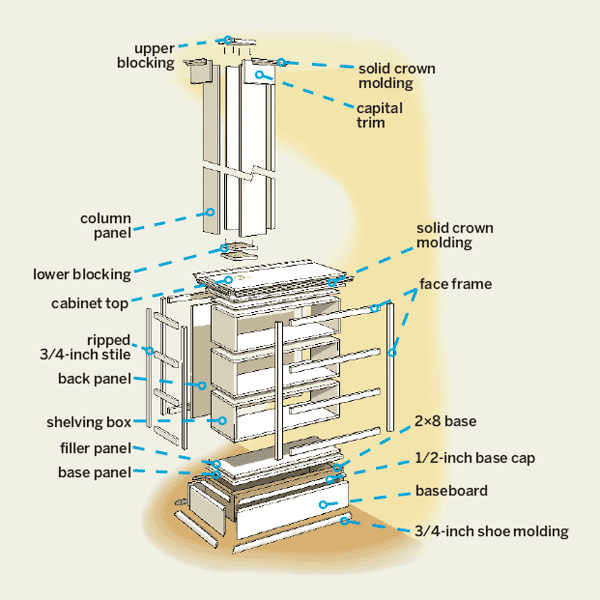
Materials
To build your columned room divider, you’ll need:
- 2-by-8-foot lumber for the base
- Construction adhesive
- Crown molding and baseboard trim
- Medium-density fiberboard (MDF)
- Paint and primer
- Screws (MDF and deck)
Tools
Make sure you also have the following tools on hand:
- Caulk gun
- Circular saw or table saw
- Clamps
- Drill/driver with a countersink bit
- Level
- Miter saw
- Pneumatic brad nailer
- Straight edge
Cut List
You can download the full project cut list here.
Safety Tips
Safety is important for any DIY project. Take the following precautions:
- Don’t work when you’re tired or distracted. Accidents happen when you’re not focused.
- Work in a well-ventilated area, especially when cutting MDF. The dust can be irritating, so we recommend opening windows.
- Always wear safety glasses.
- When you’re using loud tools like saws, use ear protection.
- Keep a first-aid kit nearby.
Building the Base and Cabinet Boxes
The foundation of your room divider is a sturdy base and stacked cabinet boxes. Here’s how to create these components.
Constructing the Base
First, start by building the base. Beidel uses 2-by-8s to match the height of the existing 1-by-8 baseboard:
- Cut the four base pieces to size according to the cut list.
- Assemble the base frame using 2 1/2-inch deck screws.
- Remove any existing baseboard molding from the wall.
- Position the base against the wall, ensuring it’s level and shimming if necessary.
- Secure the base to the floor and wall using deck screws.
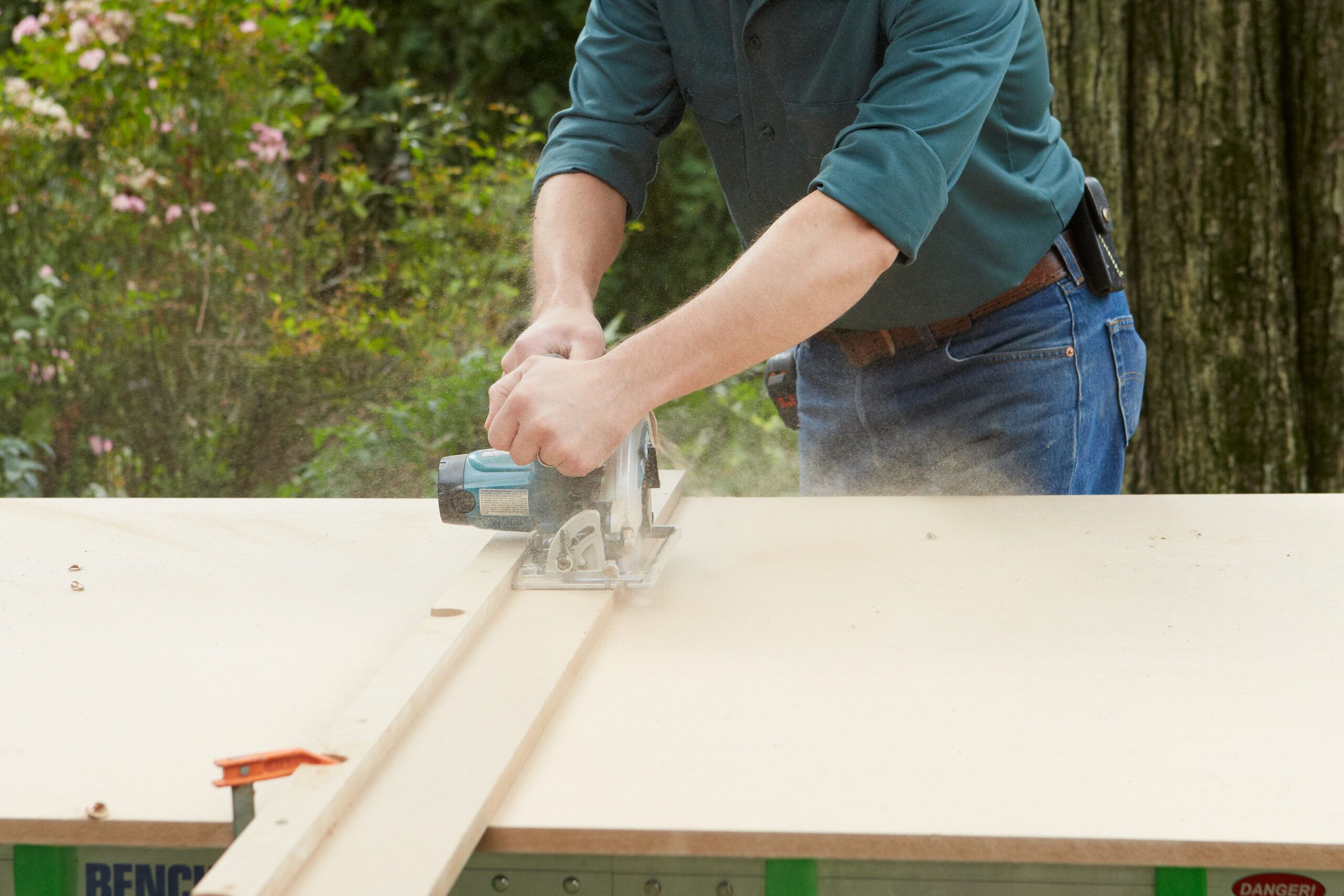
Creating the Cabinet Boxes
The body of the cabinet is made up of three identical boxes stacked on top of one another to form shelves. Here’s how to create the cabinet boxes:
- Take your MDF stock, clamp a straight edge in place, and use a circular saw to cut each piece according to the cut list.
- For each box, the top and bottom capture the sides. Lay the bottom piece on a workbench, run a bead of construction adhesive along the edge of one side piece, then clamp it upright to form an L with the bottom.
- Repeat on the other end. Tip the assembly so that you can countersink pilot holes for 1 1/2-inch MDF screws through the bottom and into the edges of the sides. Drive the screws and remove the clamps. Set the assembly upright.
- Apply construction adhesive to the top edges of the sides, and set the top in place. Clamp it down at each side, countersink pilot holes, and screw it in place, as shown.
When cutting MDF, use a fine-tooth blade to reduce chipping and achieve cleaner cuts. MDF dust is fine and can clog tools quickly; be sure to periodically clean out your saw and workspace.

Leveling the Base
Use a level to check that the base is perfectly horizontal. This will provide a strong foundation for the entire structure and prevent future alignment issues. Beidel uses a 4-foot level placed diagonally across the corners.
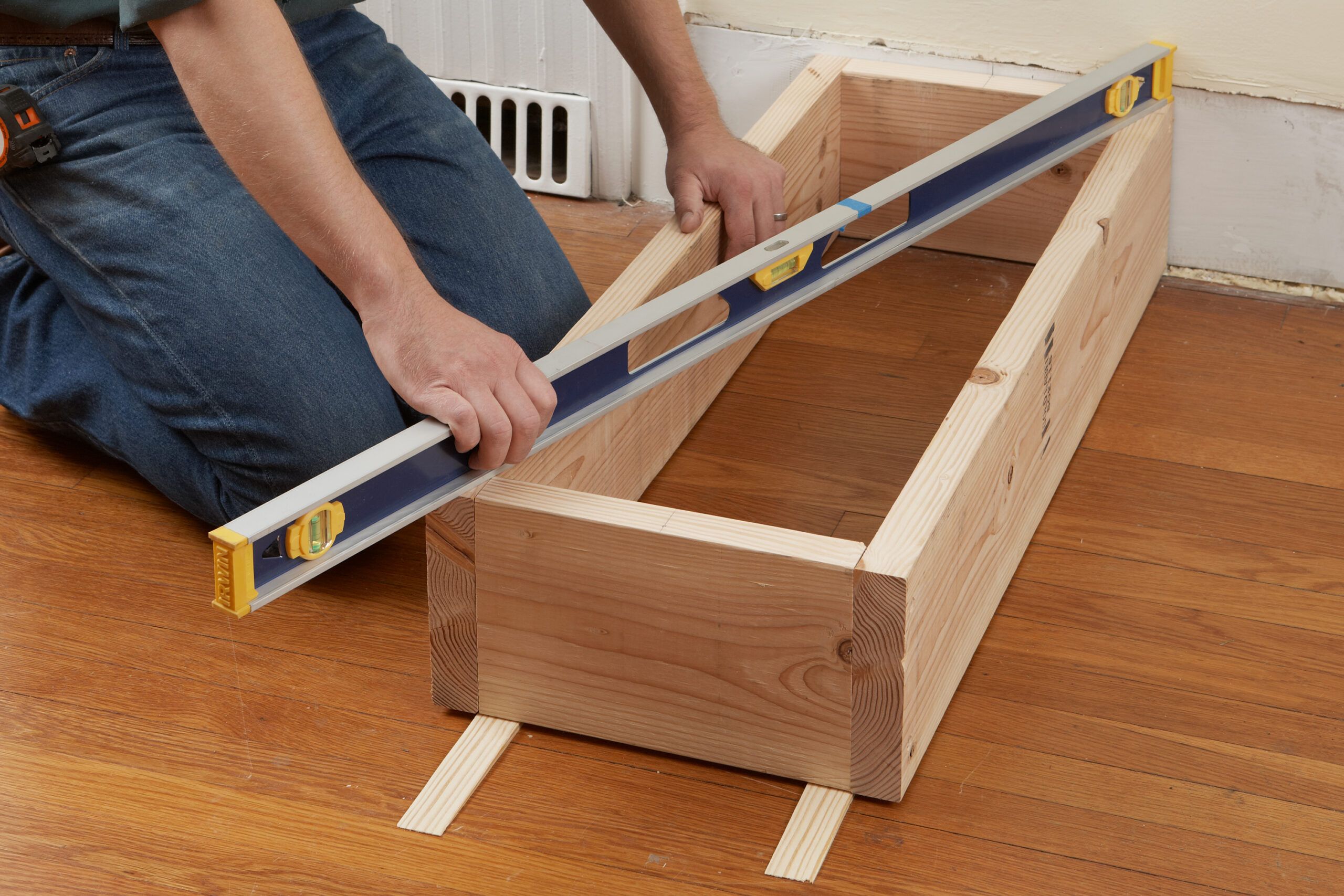
Attach the Base
Fasten the base to the floor by toenailing deck screws through the exposed end of the base and the shims, as shown. Screw through the other end of the base and into the wall. Then score the shims and snap them off.
Beidel slides the shims from the inside of the base outward so that the screws will catch the meatier ends. This also makes it easier to snap off the exposed, thinner ends of the shims.
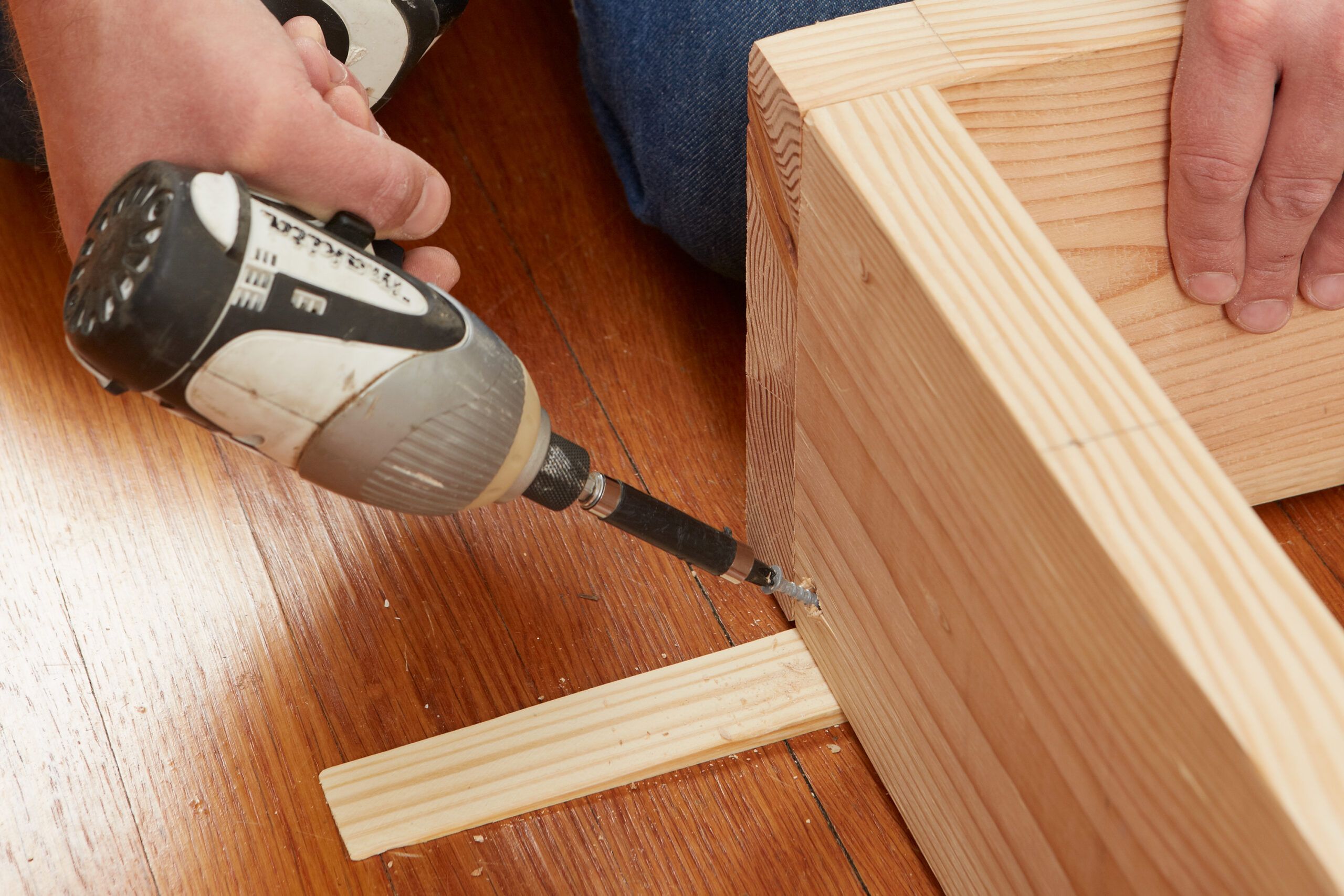
Cap the Base
Next, you’ll cap the base of the divider with filler panels:
- Run a bead of construction adhesive along the top of the base and cover it with a panel of MDF.
- Countersink pilot holes and drive MDF screws through the panel to secure it.
- Add an MDL filler panel to account for the height of the 12 face-frame trim. Use scrap trim to inset it 3/4 inch from the front and the end. Inset it 1 1/2 inches along the back edge to accommodate the back panel plus the trim.
To allow for out-of-plumb walls, Beidel leaves a 3/4-inch gap at the wall end. He secures the filler panel with construction adhesive and countersunk MDF screws at each corner.
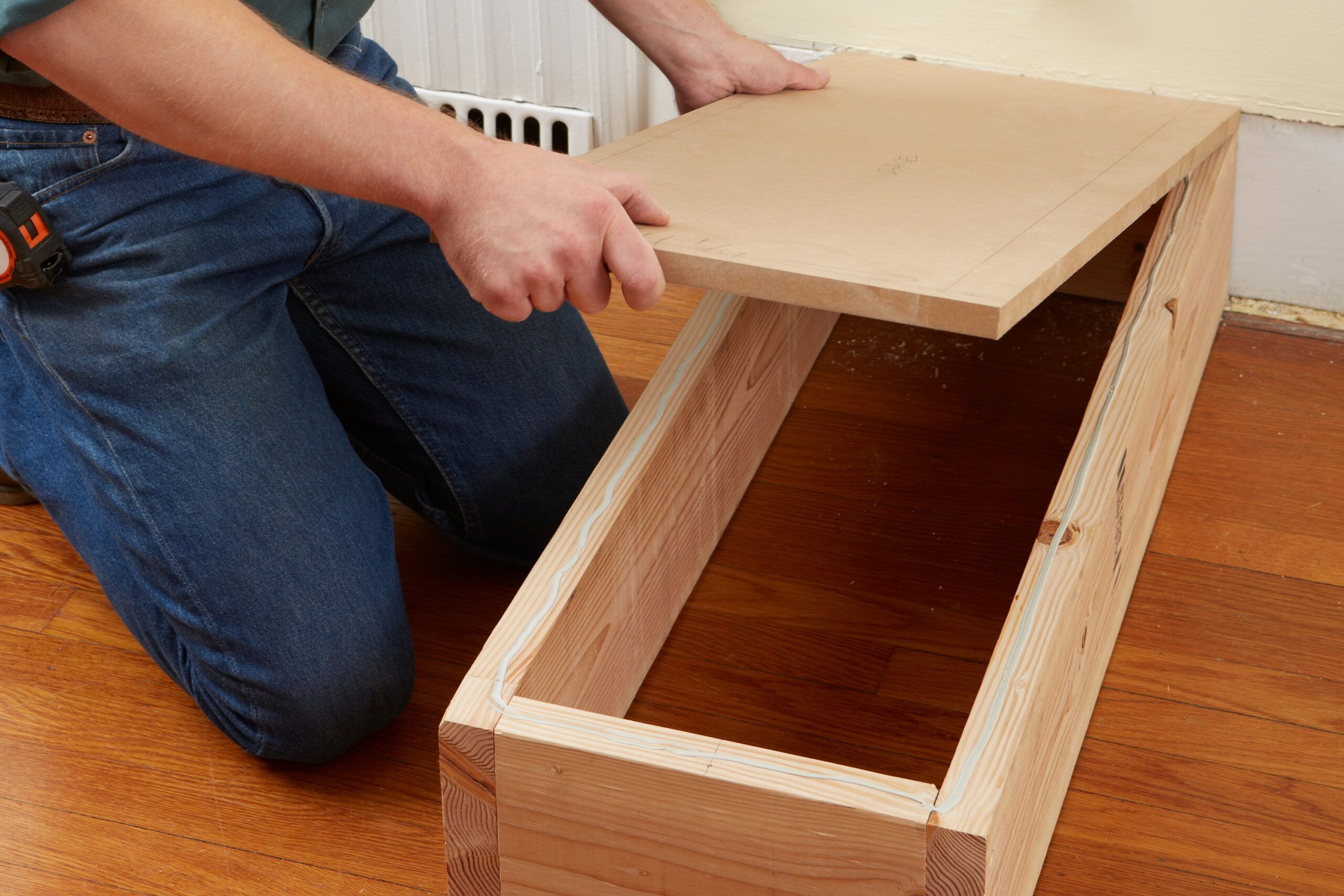
Stacking and Securing the Cabinet Boxes
With your base in place and cabinet boxes constructed, assemble the main structure of your room divider:
Stack the Boxes
Apply construction adhesive on top of the filler panel and stack the first box aligned at the edges. Tack it in place with a pneumatic brad nailer and 1 1/4-inch brad nails.
Then, stack and fasten the next two boxes in the same way. Shim the gap between the top box and the wall, then drive at least one deck screw through the box and shims and into a stud or an anchor. Make sure the top box is level, then glue and nail another filler panel on top.
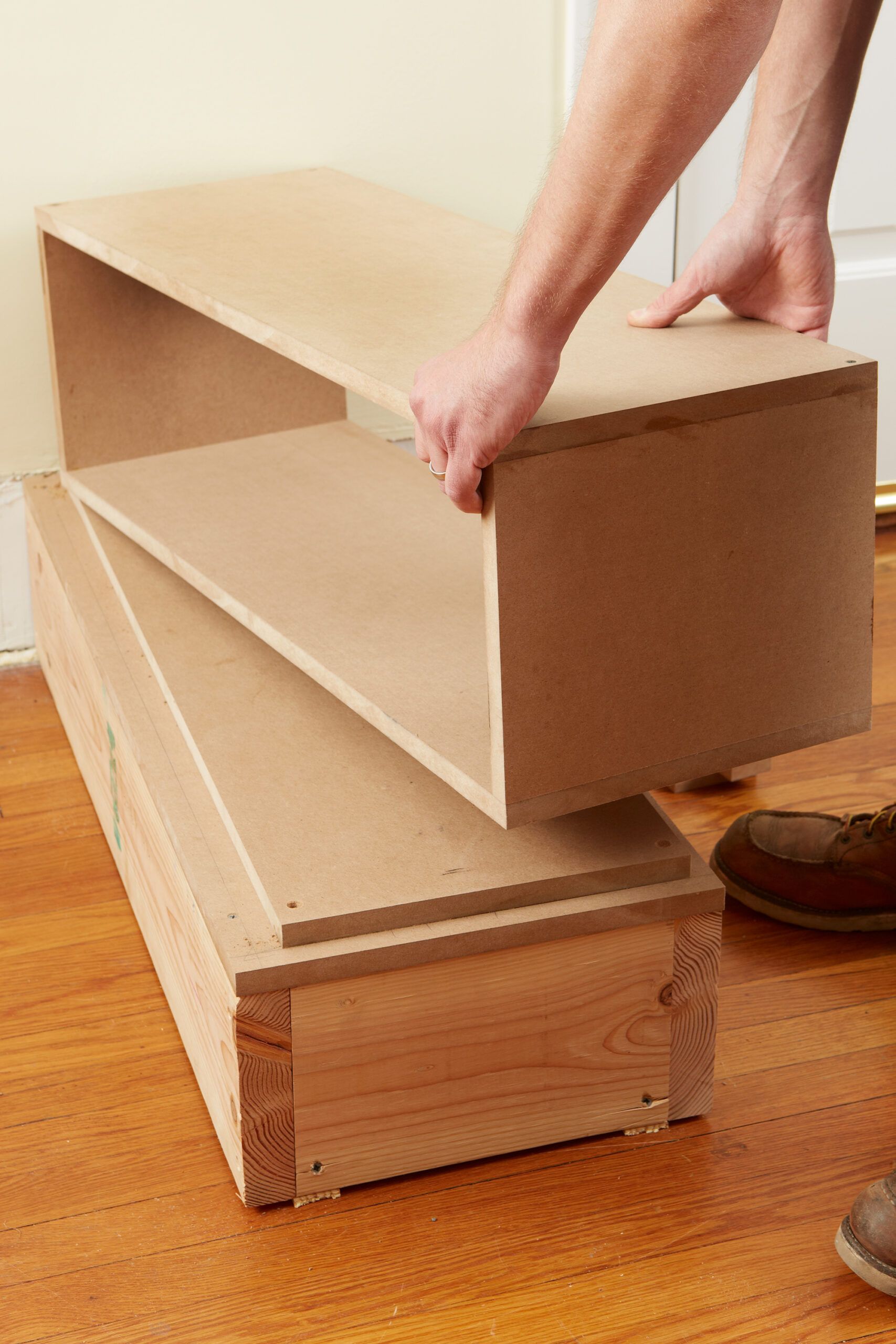
Attach the Back
Now, you can attach the back of the divider:
- Measure and cut an MDF panel to cover the back of the stack and meet the wall.
- Apply construction adhesive to the back edges of the boxes and clamp the panel in place. Countersink pilot holes and secure the panel with MDF screws, as shown below.
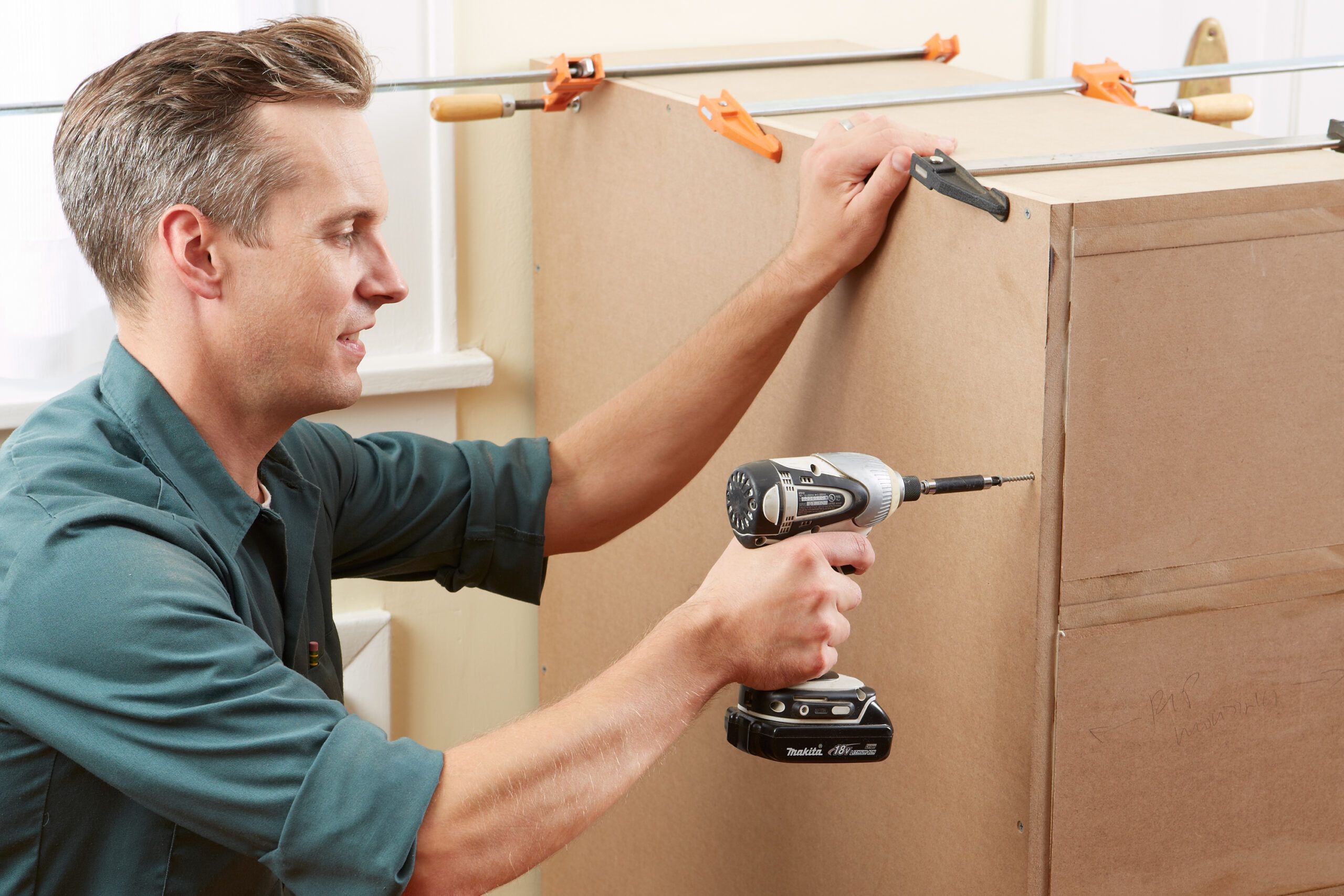
Incorporating Electrical Outlets
If your room divider design intersects with an existing electrical outlet, consider adding an outlet extender into the cabinet. This gives you easy access to power without compromising the look or functionality of your new piece. Be sure to cut precise openings for any outlets and follow safety standards for electrical work.
Adding the Frame
The face frame and column give your room divider its polished, architectural look:
Installing the Face Frame
Take extra care when installing the face frame, as this is one of the most visible parts of your project. Accurate measurements and cuts lead to a seamless finish.
Beidel rips 1 1/2-inch strips from leftover 3/4-inch MDF, but you could also use 1-by-2 trim. Either way, measure and cut the front and back stiles to length. If you need to, scribe and trim the wall-side stiles to follow the wall’s contour.
For the outside stiles, use a scrap of 3/4-inch MDF to stand in for the abutting stile to be installed in the next step, as shown. Glue and nail the stiles in place. They should end up flush with the inside edges of the shelves on the front.

Rip the End Stiles
Next, rip the end stiles:
- To make the trim the same width on both sides of the corners where the stiles meet, rip two 3/4-inch wide pieces. Glue and nail them in place, as shown below.
- Measure, cut, and install the four front rails, four end rails, and two back rails.
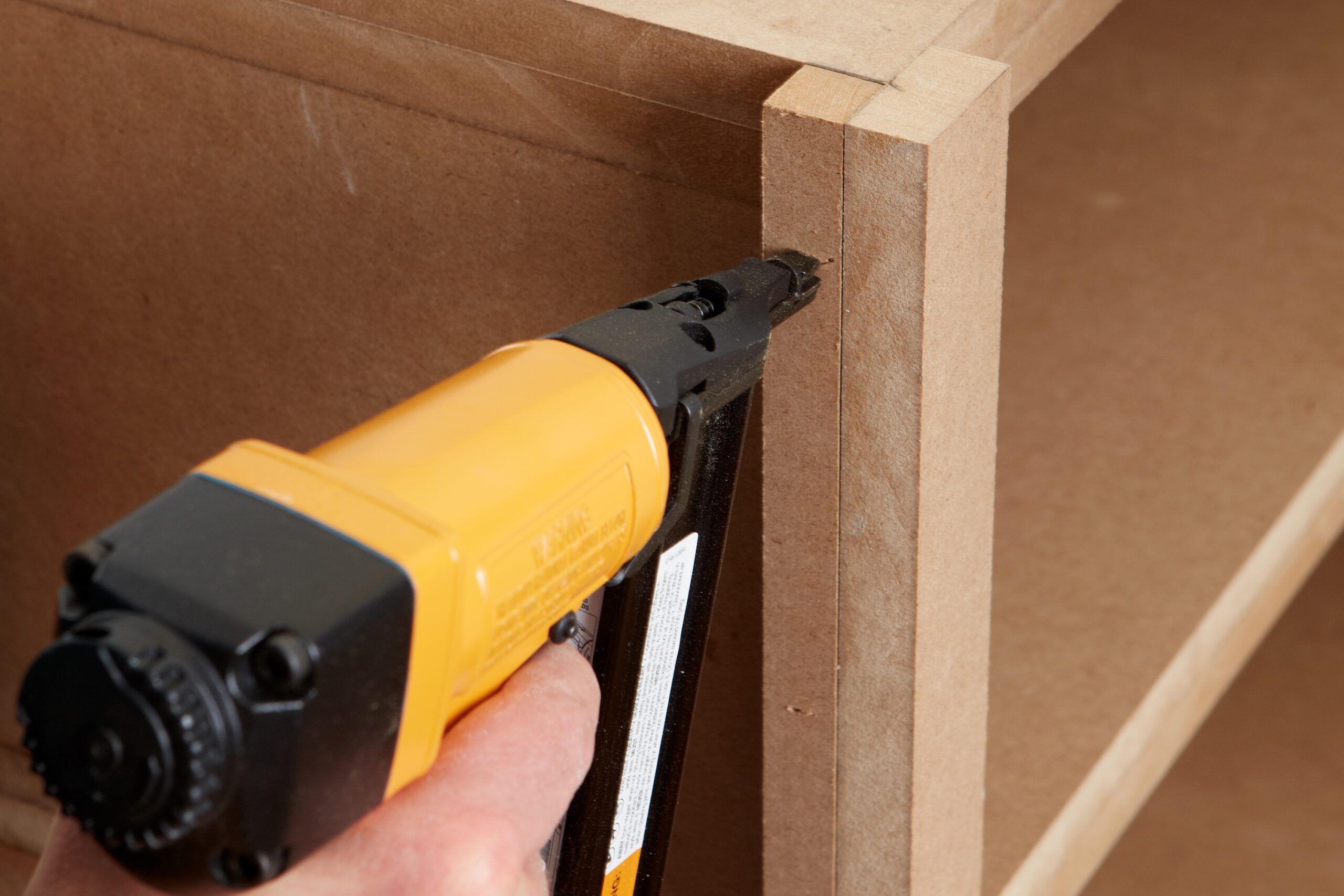
Install the Top
Measure and cut two additional panels of MDF sized to sit flush with the face frame. Glue and nail them in place. This last layer serves as your cabinet top and as a nailing surface for the solid crown molding.
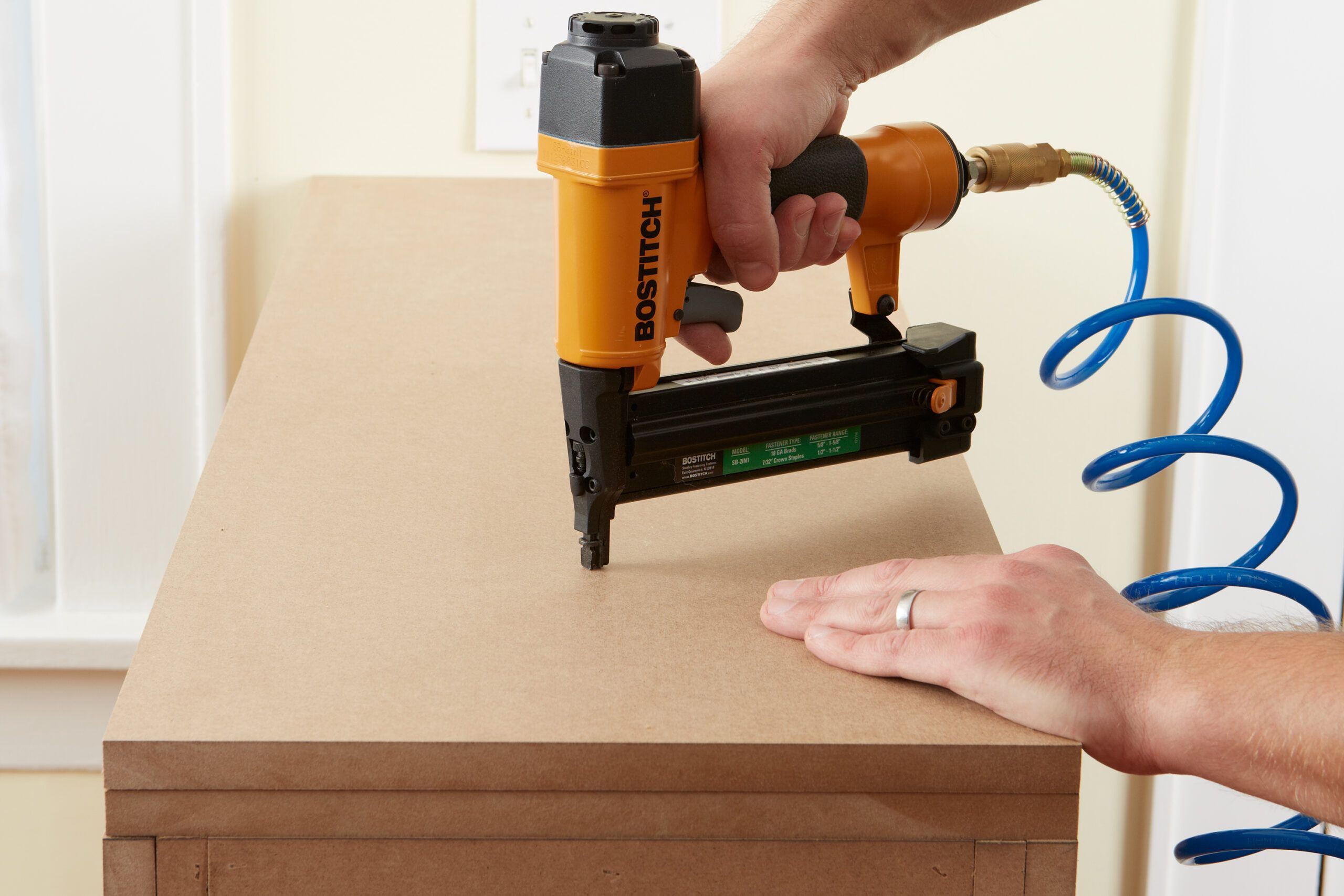
Install the Lower Blocking
To find the location for the column’s two lower nailing blocks, subtract the width of a block from the width of the cabinet top, then divide the result in half.
Use a combination square to transfer this measurement to three sides of the cabinet top, as shown in the image below. Glue and screw the blocks in place, one at a time.
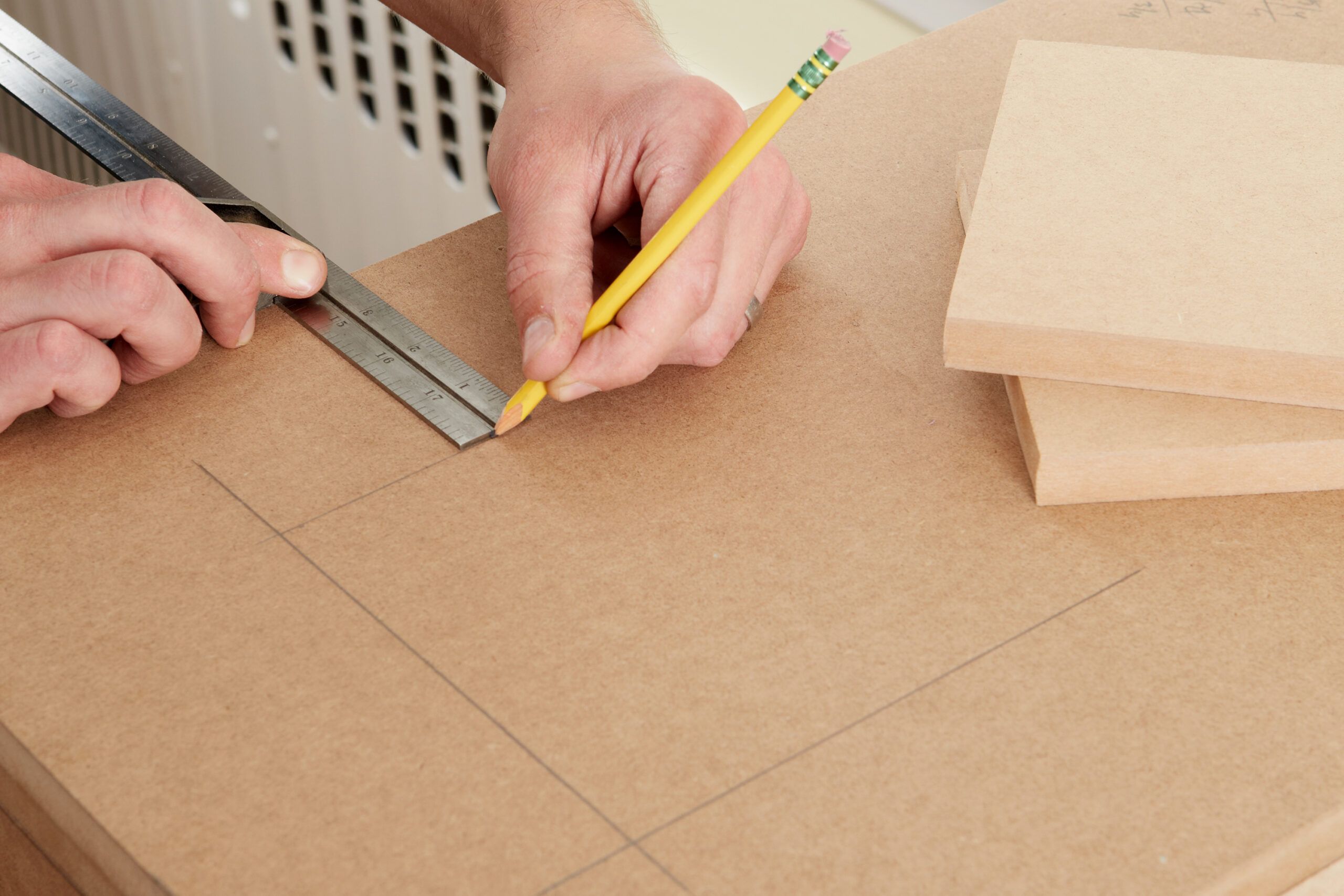
Building the Column
With the frame in place, you can now build the column.
Size the Column
First, you need to measure for the column:
- Measure the distance between the cabinet and your ceiling and cut the four MDF column panels to fit. Two should be the same width as the lower blocking, and the other two 1 1⁄2 inches wider to capture the edges of the first two.
- Clamp the base of one of the panels to the blocking, then clamp a 4-foot level to its face.
- Plumb the panel, then mark where its inside face meets the ceiling, as shown.

Mount the Upper Blocking
To mount the upper blocking, follow these steps:
- Run a line of construction adhesive along the edge of an abutting column panel and join it to the first to form a corner.
- Nail the joint together.
- Clamp a level to the new piece and check both levels to plumb the column assembly.
- Apply construction adhesive to the block and position it into the L-shaped crook, then drill pilot holes and screw it to the ceiling with deck screws.
Beidel was lucky enough to catch a ceiling joist, but you may need to use toggle bolts to fasten the block securely.
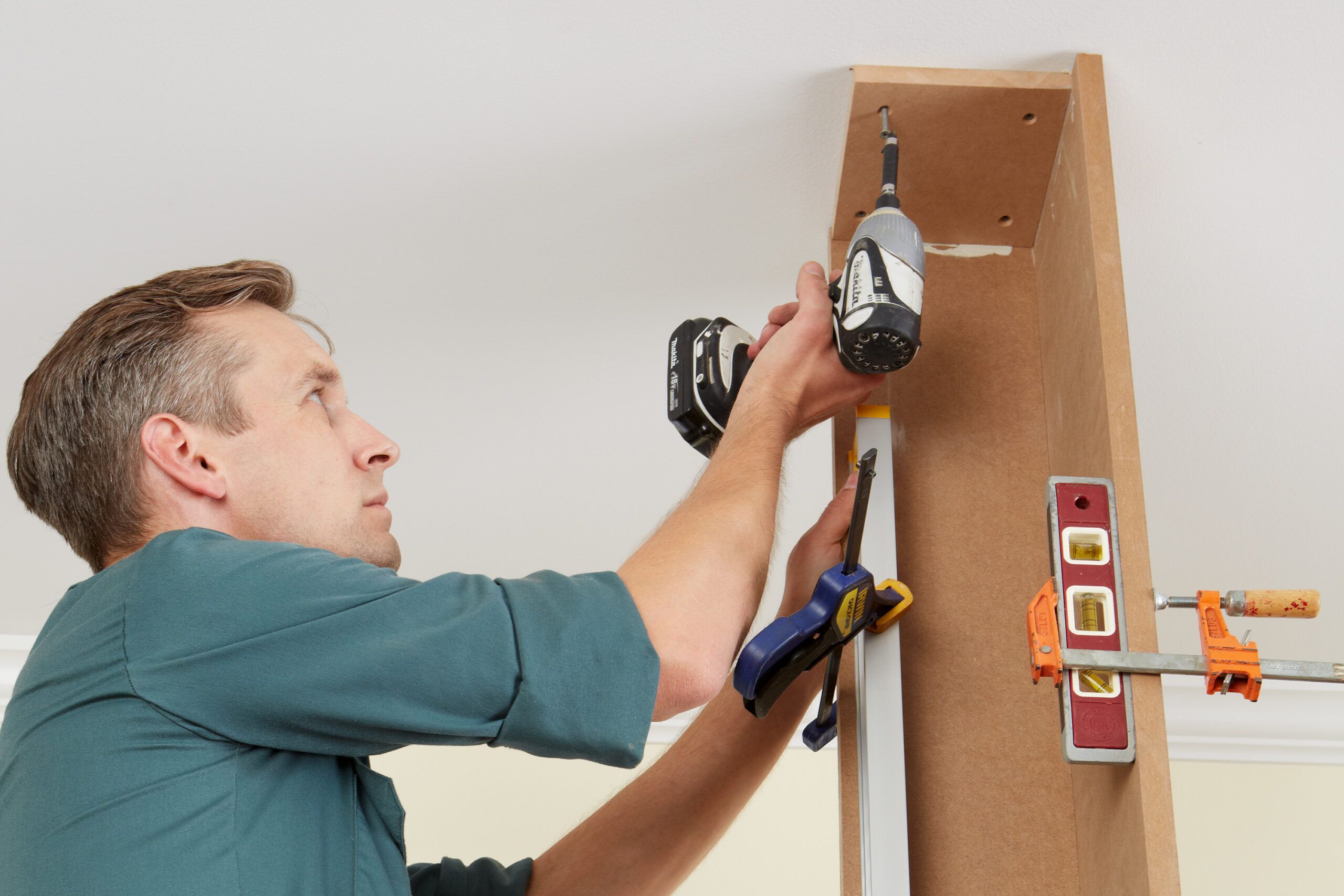
Assemble the Column
Countersink pilot holes through the tops of the column assembly and into the upper blocking, then screw them in place with MDF screws. At the bottom, tack the panels to the lower blocking with brad nails. Then, glue and secure the two remaining sides of the column in the same fashion.
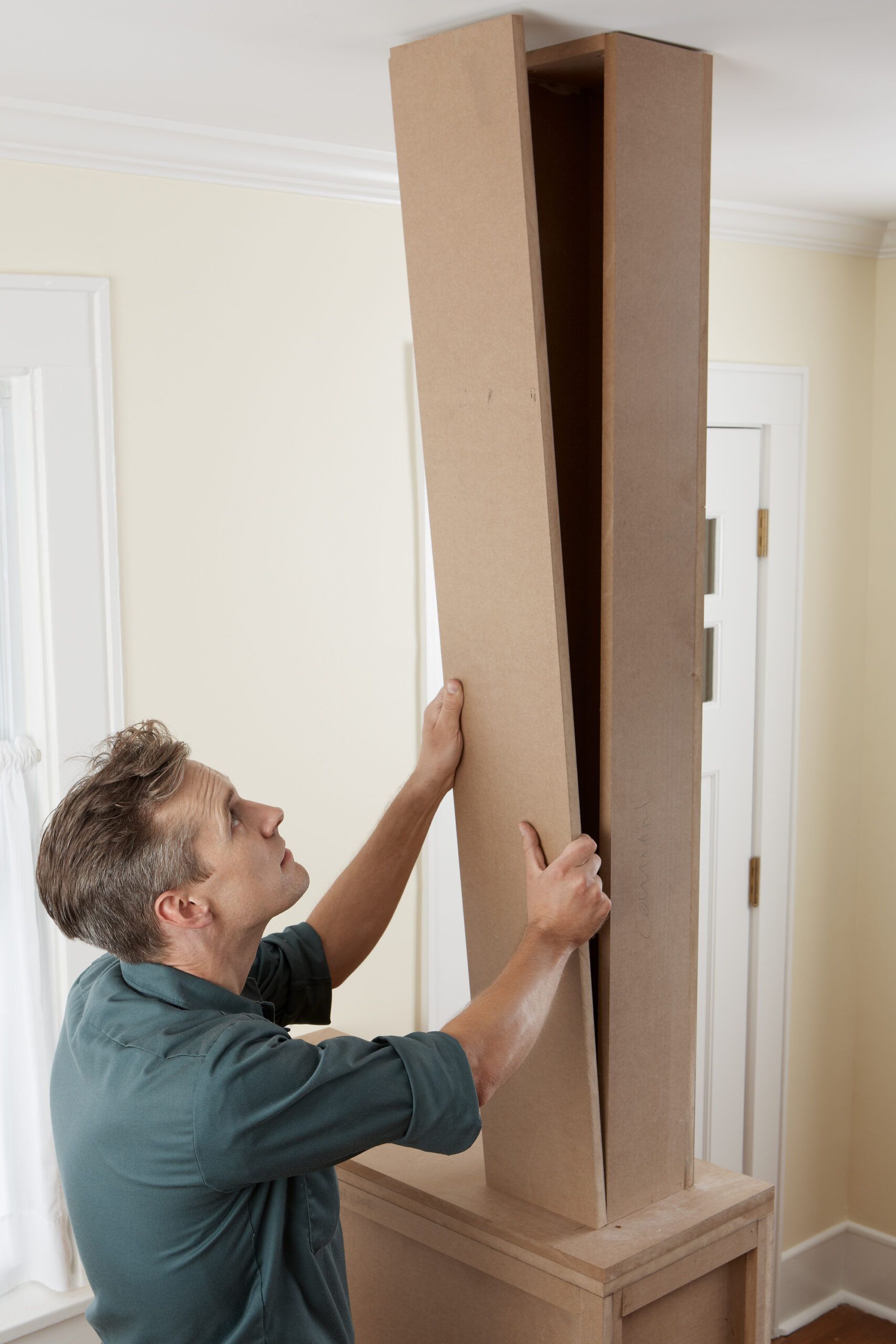
Install the Capital
To finish the top of the column, measure and cut the capital pieces to fit. Use clamps to hold the longer pieces in place. This gives you something to butt the shorter pieces into. Glue and nail each piece in place.

Trimming the Structure
To trim the top of the capital, measure one side, use a miter saw to cut a piece of solid crown molding at 45 degrees on each end, and install it with adhesive and brad nails.
Continue measuring, cutting, and installing each side as you go. To trim the cabinet top, measure its long edges and miter-cut pieces of crown to fit—90 degrees at the wall and 45 degrees at the end. Glue and nail them in place.
Measure and miter-cut the end piece to fit between the two mitered ends, then install it with adhesive and brad nails.
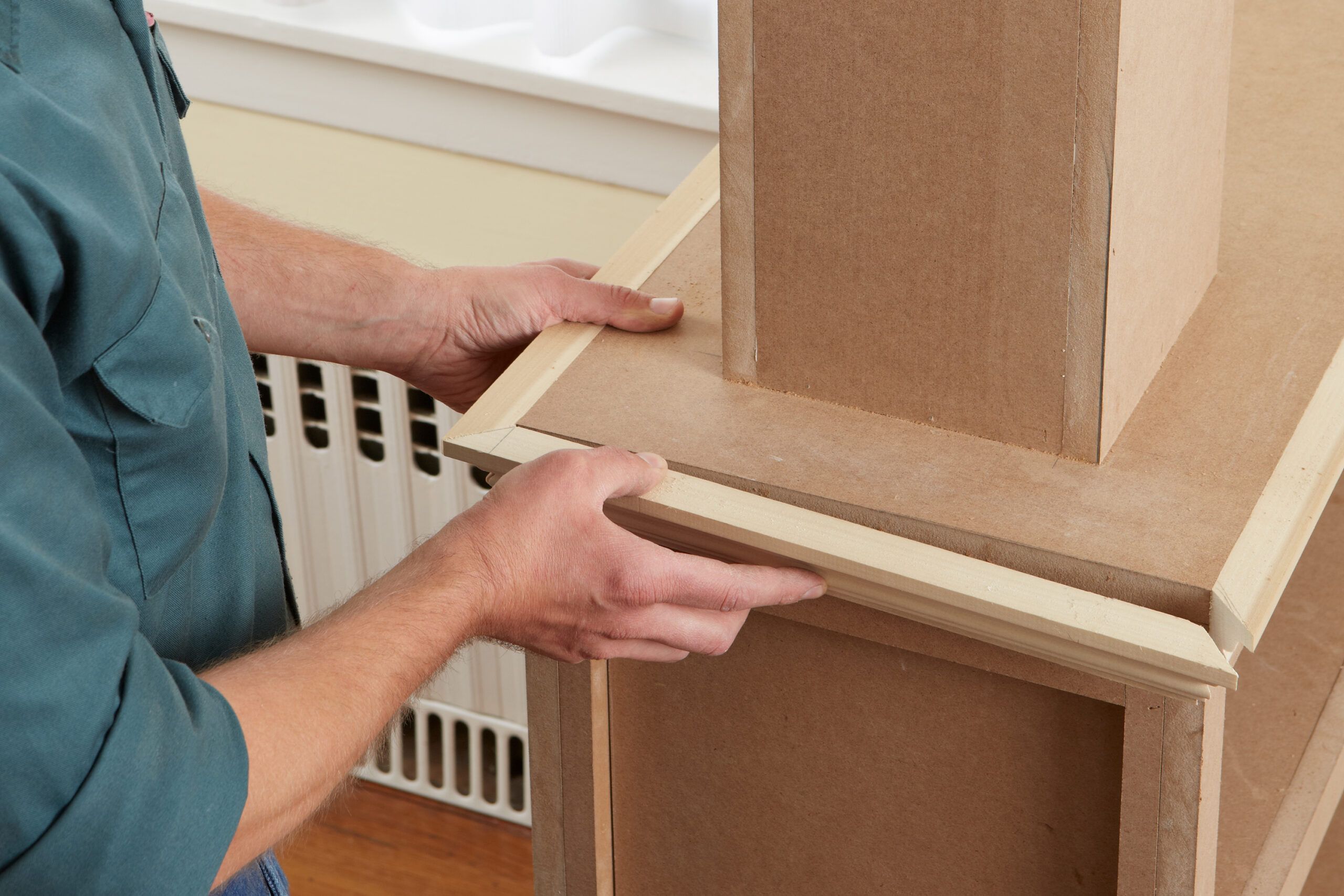
Install the Baseboard Molding
When installing trim and molding, make sure that joints are tight and clean.
Follow the same approach to install the baseboard: front and back first, then the piece that’s mitered on both ends.
Cut pieces to fit along the exposed wall and install those. Install the base cap—Beidel uses 1/2-inch quarter-round molding—the same way. Then cover any gaps along the floor by installing 3/4-inch shoe molding.

Painting and Final Touches
Finally, fill nail holes and sand any rough seams where MDF pieces meet. Use caulk to fill any gaps or imperfections before painting, giving your project a professional and polished appearance.
Prime the entire structure for even paint coverage, then paint the room divider to match your home’s decor. We recommend a high-quality paint that offers durability and easy cleaning. A semi-gloss finish balances aesthetics and practicality and is often ideal for furniture pieces.










